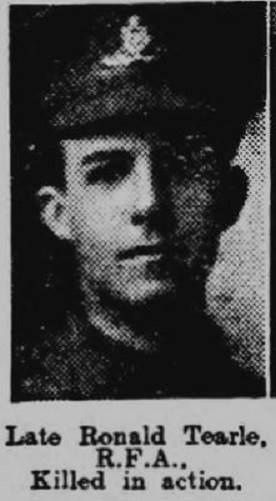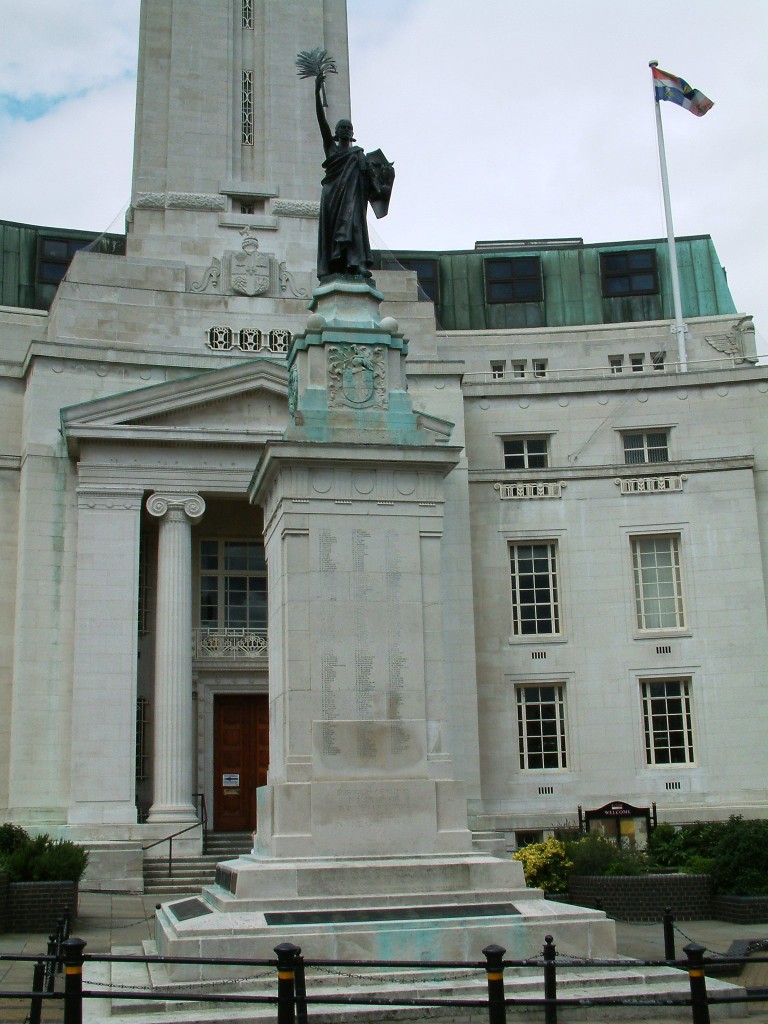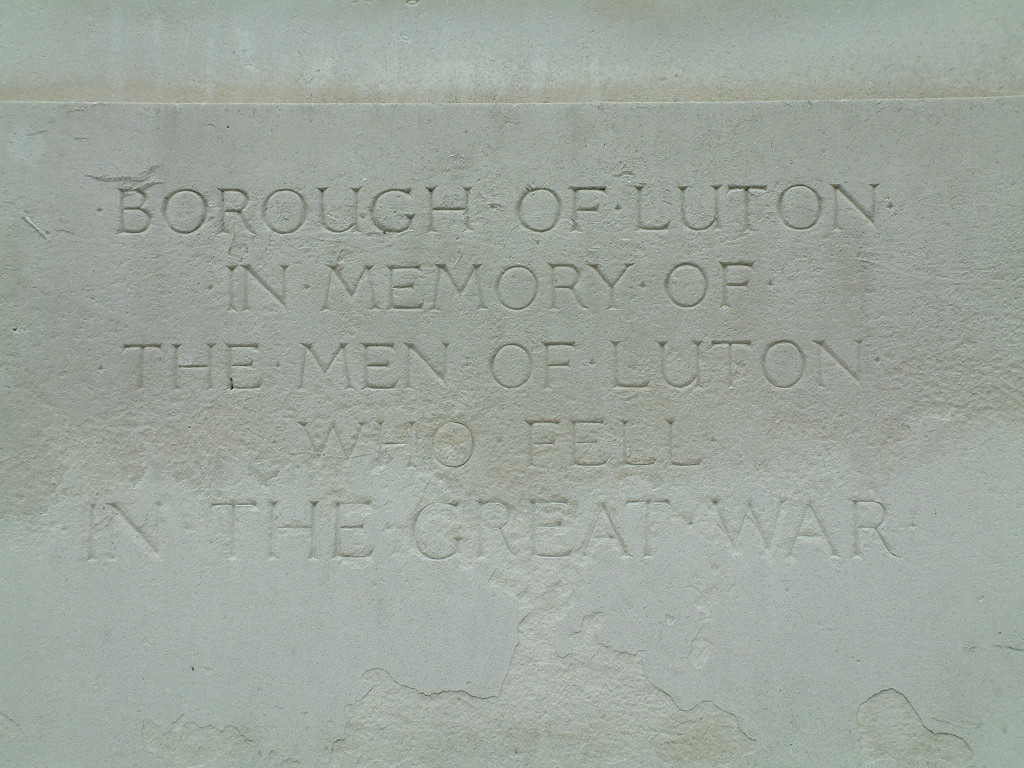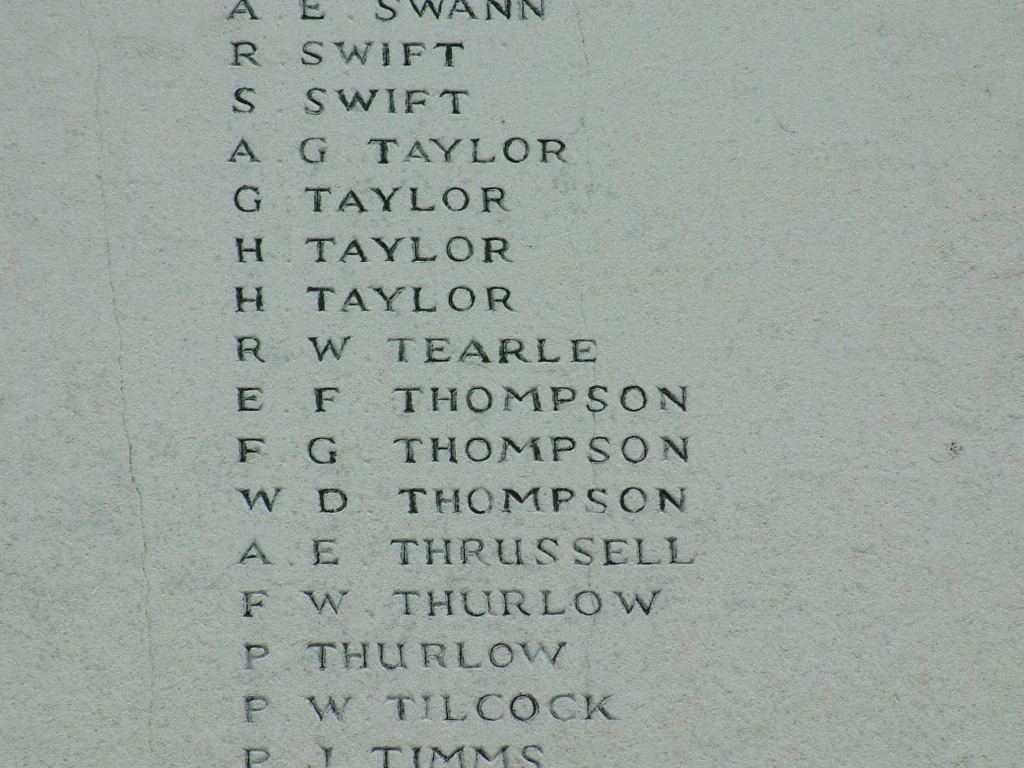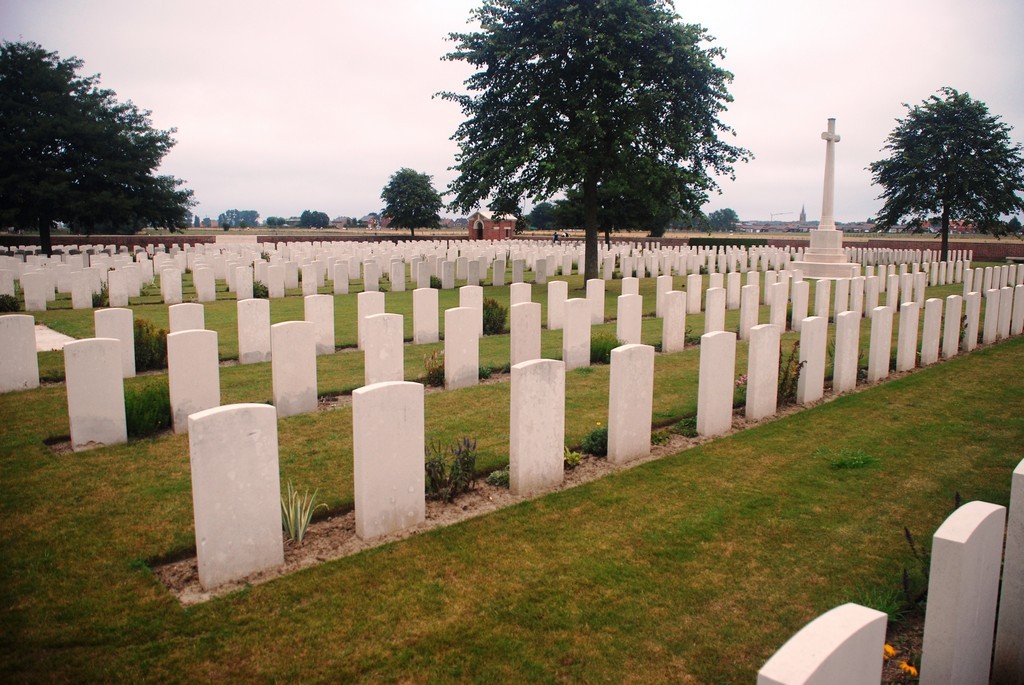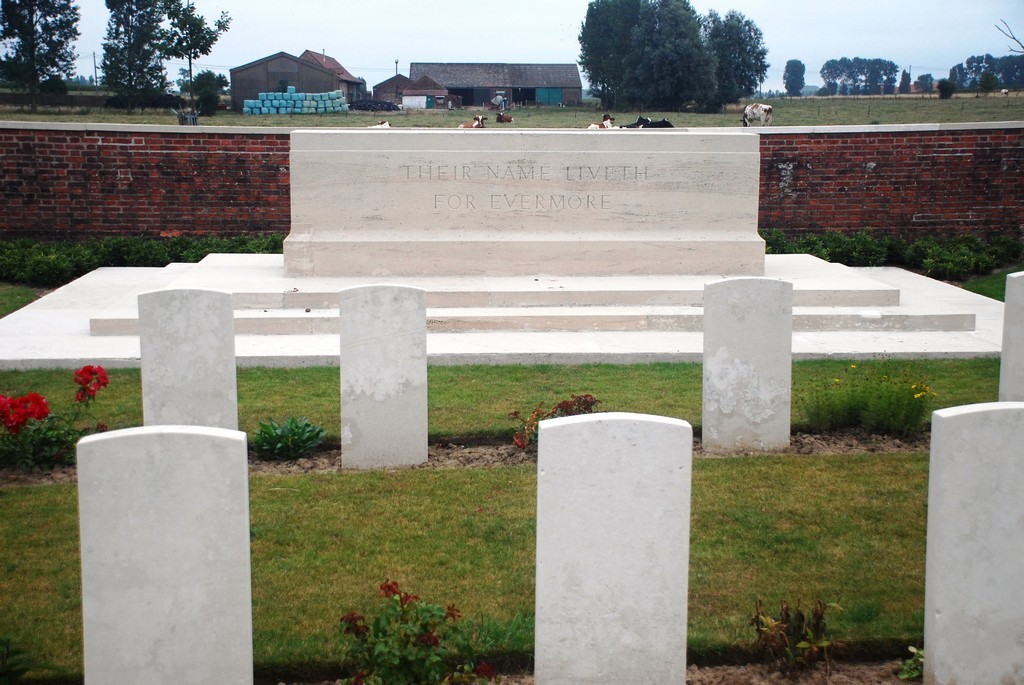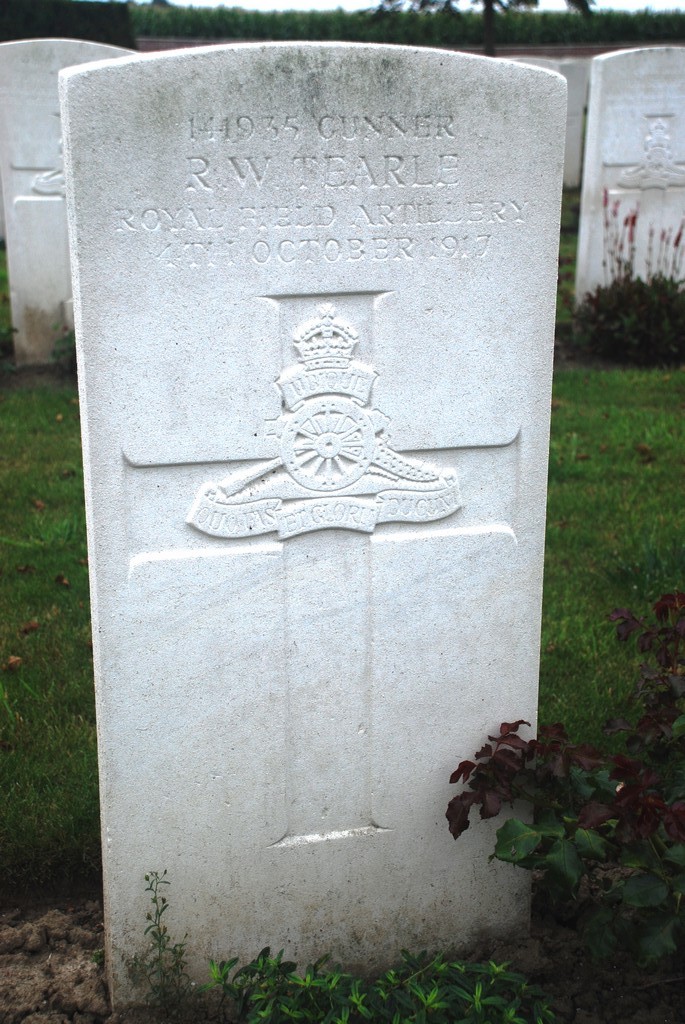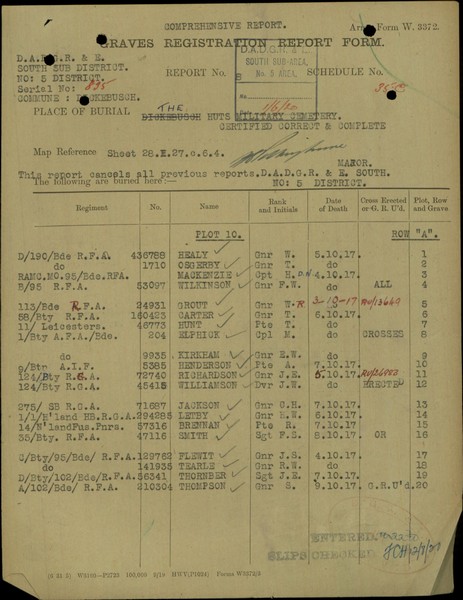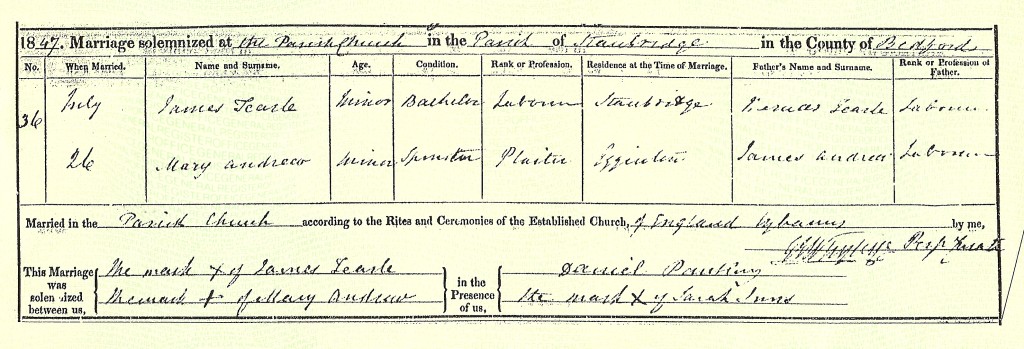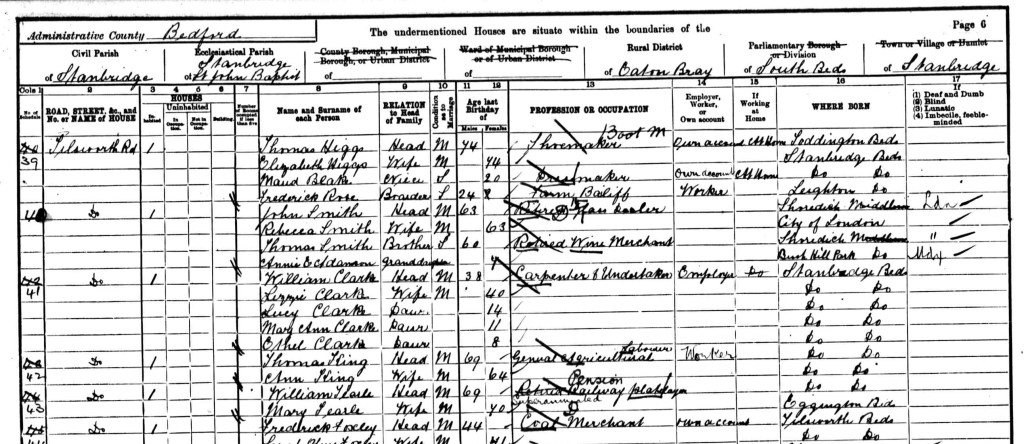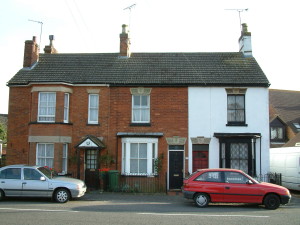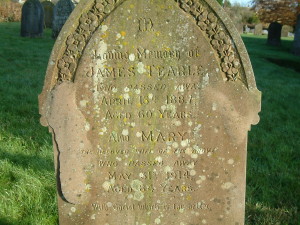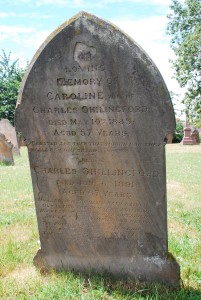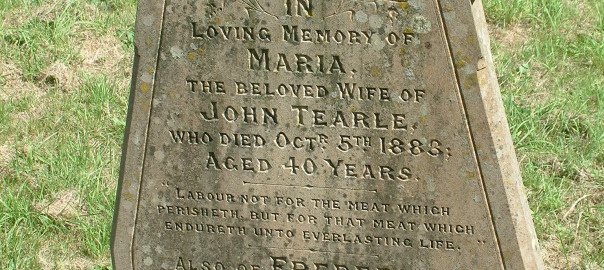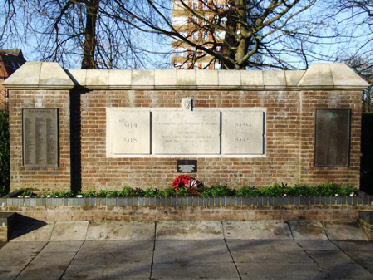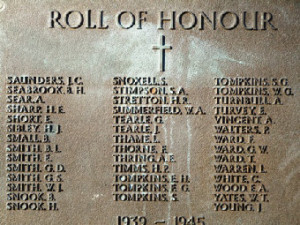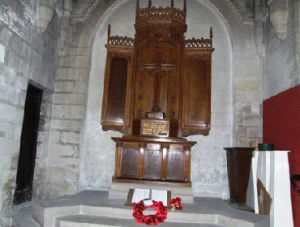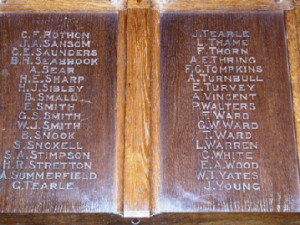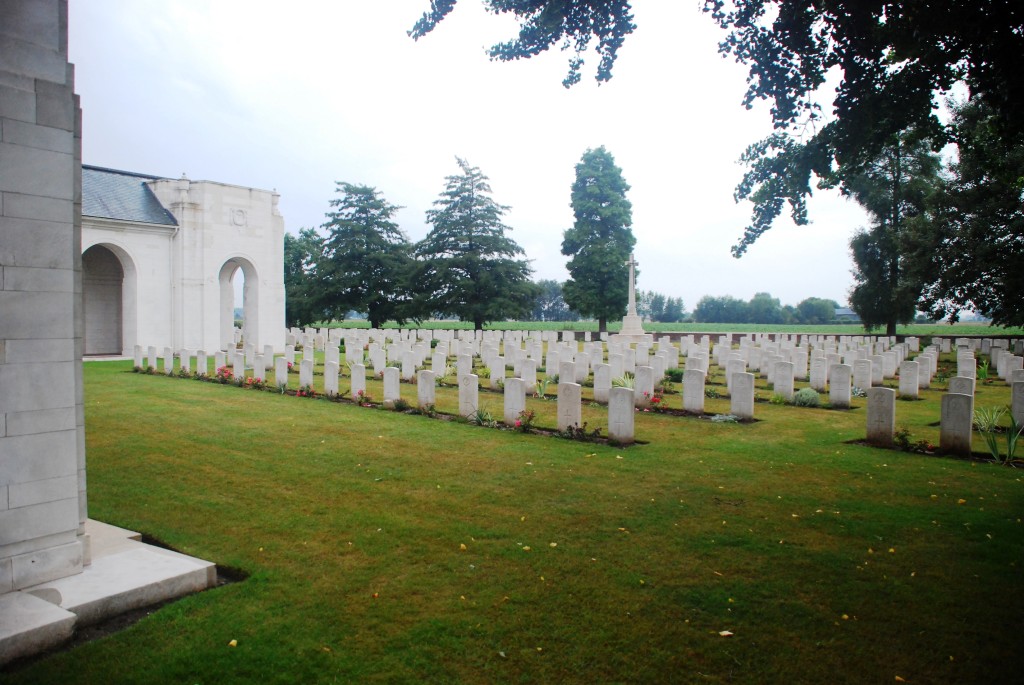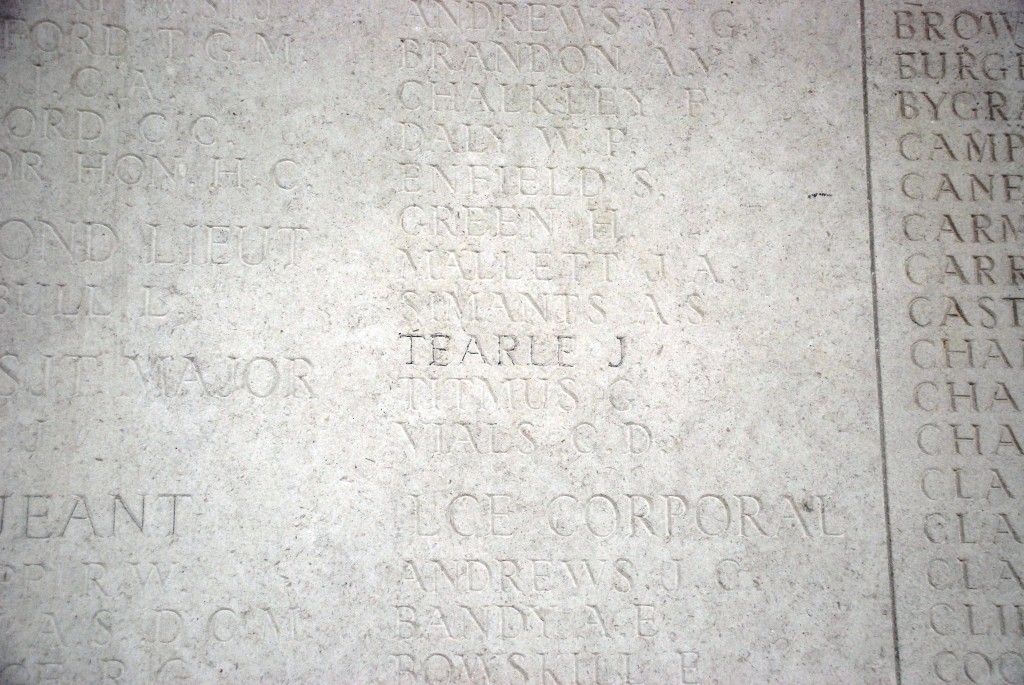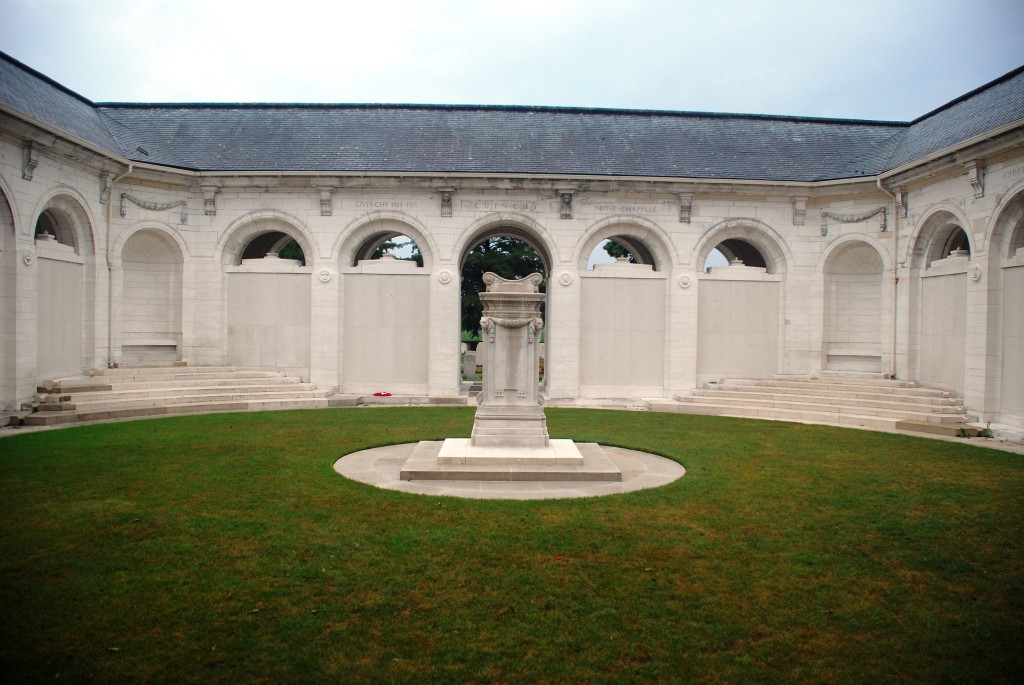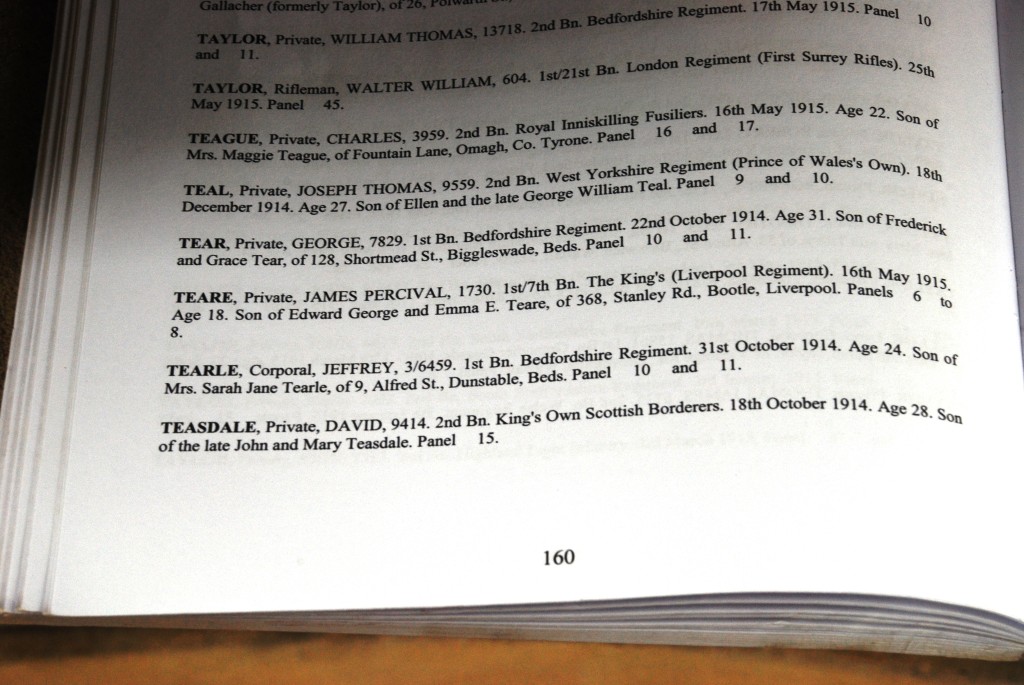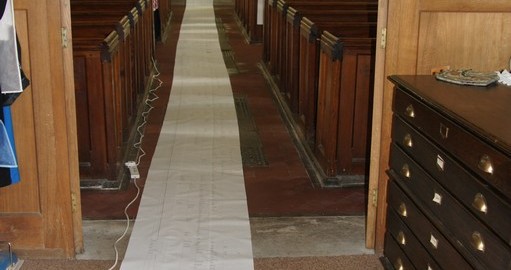Thanks
Can I please thank Pat Field for all her help with assisting visitors to find their connection to the Tearle Tree, and to John Field with his cups of tea and other refreshments. Thanks also to Barbara for manning the reception desk and taking the names of everyone who attended. We must also thank the 5 Bells for their delicious and perfectly timed lunch. They were very attentive and we were grateful for the respect we received when it was time for the speeches. Thanks in abundance must surely go to Richard Tearle for his enthusiasm and counsel in the continuing story of the Tearle Meets. And I must also thank Elaine Tearle for her support for the Meets, looking after everyone on the day, cooking her famous shortbread, afghan biscuits and brandy balls and her generous energy in helping paste up the Tree. She has also accompanied me on lots of visits to Tearle sites. Without her, a great deal of this study would not have been possible.
We would also like to record our thanks to the Vicar of St John the Baptist, Stanbridge, for allowing us to use her beautiful and historic little church for our Meet. Revd Helen Gardner was unhesitating in giving her permission, and we are deeply grateful.
Preparations:
TearleMeet5 was held in the Stanbridge Church on 12 June 2014. It was focused on the World Wars because 2014 marked the 100th anniversary of the beginning of the most momentous event of the 20th Century – the Great War. It changed the world as it was known then – forever.
Elaine and I had spent a weekend printing and pasting up the descendant trees of the common ancestors of most Tearles alive today. Joseph 1737 (340 pages) Thomas 1737 (591 pages) John 1741 (521 pages), William 1749 (340 pages) and Richard 1754 (340 pages) Nathaniel’s tree, which started with John 1620 (18 pages) and finally Ebenezer 1819 (8 pages). There was also the printing and pasting of the top of the Tearle tree from John 1560 to Thomas 1709 (4 pages) who was the father of Joseph, Thomas, John, William and Richard above. There are 16 generations of the Tearle Tree from John 1560 to my grandson.
Richard Tearle, the leader of the Yahoo Tearle Group, and inspiration for the TearleMeets, had suggested the World Wars theme, so Elaine made up three huge posters – WW1, WW2 and the early 20th Century marriage of William Palmer (Bill) and Joan Orlo Todd in Wing. The two World War posters were divided into “Casualties” on the left of the poster and “Those who served” on the right. In the picture on the left, below, Elaine is examining the text of a caption prior to pasting it on the WW2 poster. On the floor to her left, you can see the tin of ANZAC biscuits that Elaine bought in New Zealand, to take to the TearleMeet.
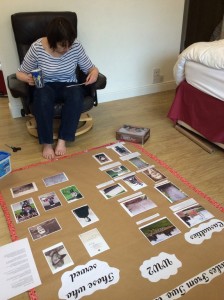
Elaine studies the stories of the people as she makes up the poster.
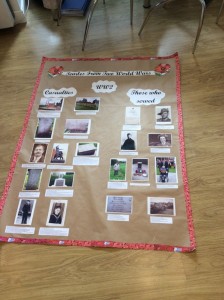
The finished WW2 poster.
First impressions:
At the Meet, we had two large boards on which to display the posters, as well as the portrait of the wedding in Wing which we attached to the message board in the church entrance.
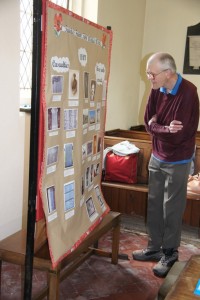
Bryan Inns studies the WW1 poster.

The Palmer wedding in Wing. Jennie Pugh and Joyce Palmer feature.
In the picture above right, you will see standing behind Ruth Palmer in a jaunty little hat, is our beloved Jennie Pugh, whom we have taken to two TearleMeets. Ruth Palmer was the daughter of Levi Tearle and Sarah nee Blake, and mother of the groom, William (Bill) Palmer, who is Levi’s grandson. On the right of the picture, standing behind two seated young women, is Jennie’s sister, Joyce Palmer, whom Elaine and I knew well, and have visited in London.
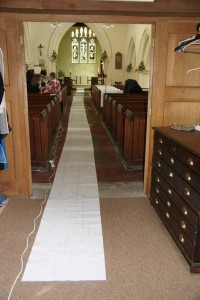
From the vestry to the pulpit – the branch of John 1741
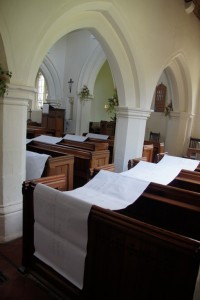
The shorter branches were draped over the pews.
Once we had set up the registration centre, and the computer to access the family records, we rolled out all our printed branches. The branch of John 1741 (the one I am on) is the longest of them all. The branch of Joseph 1737 was next longest, and it did not fit anywhere because it, too, was very long. We laid it down in the next-longest isle, but we had to step over it to get to the kitchen. That’s the beauty of a small church – you fit it because you love it, and it will always accommodate you. The secret of the scrolls is that they are not very deep, only six generations, mostly stopping in the early 20th Century. They are long because the family has many members, so you have to read the scrolls from between the pews, and scan along the length of the scroll looking for the person in the family from whom you know you are descended. The computer helps there; I look up the person of interest on the family tree mapped out in great detail, and I can tell the person who initiated the enquiry, which scroll to study and approximately where to start.
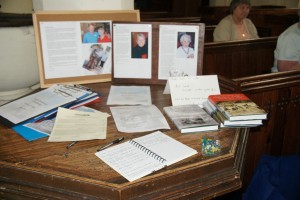
The reception desk with the registration book.
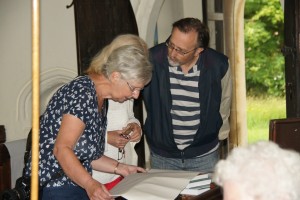
Pat Field assists with enquiries.
The reception desk allowed us to register each attendee, and to discover their Tearle roots. We took this opportunity to identify their ancestor, and to show them where, on any particular chart, they could start their research on how, and exactly where, their Tearle story started. We also displayed the pictures and story of family members who had died in the past year.
And off to work!
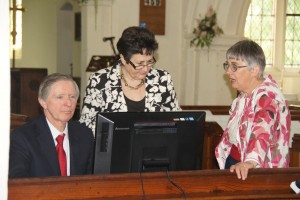
Ewart, Catherine Brunton-Green and Barbara Tearle study Norman Tearle of Soulbury.
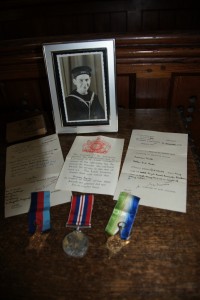
The story of Norman Tearle, and his medals.
Norman was killed in World War 2. He was on one of the Little Ships picking up soldiers from the beaches of Dunirk. He was killed on 31 May 1940, and the Little Ships rescue started on 24 May, so he might have sailed on a couple of rescue missions before his boat was destroyed. I cannot find any details of the boat or its story. He would have been Catherine’s uncle. Look at how young he was. Catherine has made a dossier for his photograph, his medals, his letters and official correspondence about his death. She has kept his memory alive, that people may thank him for the contribution he made to a world he would never see.
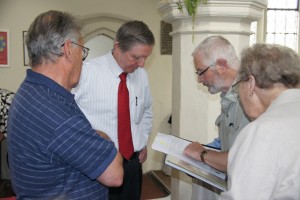
Ewart checks the paperwork with Alan Gibb.

Minnie and Edith Tearle of Wing.
Alan Gibb is an expert on the Wing Tearles. Levi Tearle, born 1850 in Stanbridge, left the village with his wife, Sarah, to set up a smithy of his own in Wing, about three miles distant. He also took his brother, Amos, who worked in the business until Levi’s second son, Mahlon, was old enough to become a blacksmith himself. This lovely photograph of two of Levi’s daughters (the third one, Ruth, is in the wedding photo, above) is an illustration of Levi’s love of mechanical things. Alan, above, brought documents and photographs to the Meet, to ensure that Amos’ family was well documented. We thank him sincerely. He gave us a photo of Jeffrey Tearle and Maud nee Cutler, his wife, and their children. Jeffrey and Maud’s grave in the Wing churchyard is within a few metres of the grave and headstone of Levi Tearle and many of his family.
We have written a booklet on the Tearle graves that surround the church, and the relationships that even some non-Tearle headstones have with Tearle history in Stanbridge. This is a village that has existed since at least Roman times, and its story since the Normans is largely, although in a fragmented way, documented. The church itself is a Norman church, built on the site of an existing chapel. Outside the door of the church is a stone which has been deeply carved with what would appear to be a Celtic cross, which hints that this has been a holy place for very long time. The Tearle graves are an important part of the documentation of that story. Village lives are complicated by time and by changing relationships. The Tearles were mostly tenant farmers and farm labourers; their marriages were amongst the other tenant farming families, and those of neighbouring villages. They also followed the religious streams of their times, so there is a strong Methodist following in Stanbridge, and the booklet documents those lives as well.
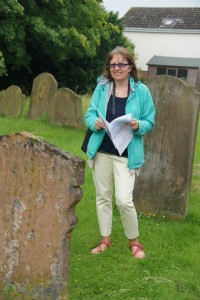
Karen Davies explores the Methodist graves.
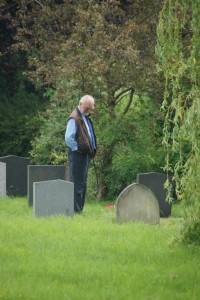
Rod Teale reads some of the Methodist headstones.
Karen and Rod, above are descended from Methodist families of Stanbridge. The booklet documents the relationships between the names on the headstones, often revealing the complex relationships that village life developed over time. Karen for instance, is the great-great-grandaughter of Phoebe Tearle, born 1843, who married Jason Field. It can be a salutory experience to come from London or Lincolnshire and see the tiny village, the lovely church, the powerful headstones and note the lives of children who died tragically young, to become aware of a past that we have inherited, if only we knew its story. Karen added to our knowledge by gifting us a photo of Phoebe Field, her daughter Mary Sharrod (she married Michael Sharrod in London) and Edith Mary Sharrod (Mary Sharrod’s sister-in law) who had married William Henry Bocock in Nueaton, 1909. She also gave us two pages of her family register one of which recorded the children, and another the deaths, of Mary and Michael Sharrod, who, interestingly, became Baptists. I did say village life was complicated.
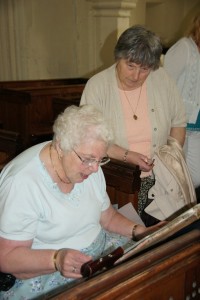
Enid Horton studies some of the documents.
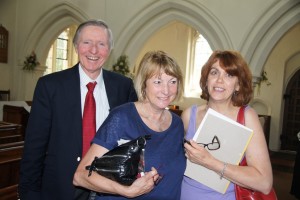
Ewart with Sheila Mould and Geni.
Enid Horton is a TearleMeet regular and brings a wealth of knowledge of her Tearle roots. Enid and her daughter Lorinda, in the very first TearleMeet, transcribed all the Tearle marriages from the Church’s banns register since 1823. I should point out, too, that Enid Horton is descended from Annie Tearle 1868 and Charles Rose. Annie was a daughter of John Tearle and Maria nee Bliss. His is the headstone, that records he was the church sexton for 60 years, is alongside the headstone of my own great-great-grandparents, James Tearle 1827 and Mary nee Andrews. John and Maria’s youngest son, and therefore Annie’s brother, Arthur Tearle 1881, emigrated to America. His modern descendants are the Chancellor boys, Bob and Sam, of Missouri. They still have contacts with the descendants of Charles Rose, in Stanbridge.
Sheila Mould, above, came to give us some depth into the story of her family. She is descended from George Tearle b1818, the first Tearle to move from Stanbridge to settle and work in Watford. On the railways, of course, one of the cornerstone forces of social change in Britain in the 19th Century. Sheila is also a cousin of many Australian Tearles, also descended from Watford Tearle families.
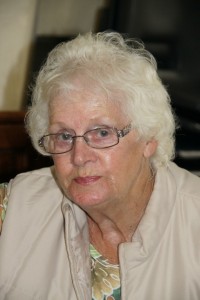
Sheila Leng, a Bedfordshire local.
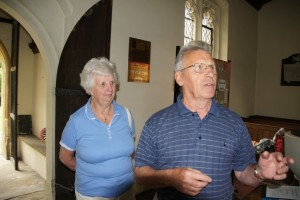
Steve and Alison Wheeler.
There are more Tearles in the phone books of Leighton Buzzard, Dunstable and Luton than anywhere else in the world. Sheila comes from that select group. She has been to every TearleMeet, and she is a close cousin. Steve and Alison Wheeler dropped in to wish us all the best and to drop off a few stories of their family history. Steve is descended from Emma Tearle 1837, who married George Pratt in 1857. Theirs is one of the marriages Enid Horton and Lorinda found in the banns register. Emma is a sister to James 1827 and John Tearle above, and therefore Steve is related to Enid Horton, to me, to Sheila Leng, and to the Chancellor brothers.
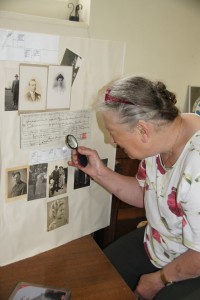
Deborah Meanley examines the Soulbury Tearle exhibit.
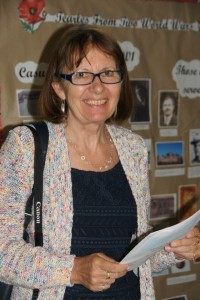
A visitor arrives to tell her story, and to explore the scrolls.
The visitor above, paperwork in hand, came to see how her Tearle connections fitted into Tearle history. Deborah, above right, is descended from the Soulbury Tearles. Norman Tearle was one of those, but also Edward Kefford Tearle, who was killed on the same day as Norman. Whilst Norman was rescuing soldiers from the surf of Dunkirk, Edward was fighting a rearguard action to keep the Germans at bay on the inland side of the coast.
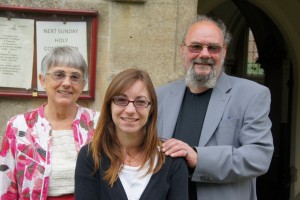
Barbara Tearle, Samantha, and Richard Tearle.
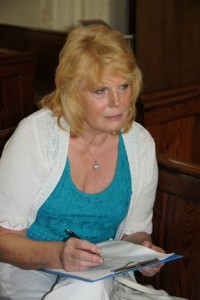
Stephanie Teale.
Barbara Tearle is possibly the most knowledgeable person around on early Tearle history, and a truly nice person. We are fortunate, and privileged, to have her as a TearleMeet regular, and our mentor. She is the sister of our Tearle Group leader, Richard Tearle, and they are standing with Richard’s daughter, Samantha. Stephanie and Rod Teale came to our last TearleMeet and for them it was a revelation. They were not Teales at all; Rod Teale was a dyed-in-the-wool Bedfordshire Tearle. It was a delight to see them return.
For those who could no longer come:
We noted with great sadness the passing of three Tearle family members: here are the obituaries I prepared and read to the TearleMeet.
Joyce Palmer
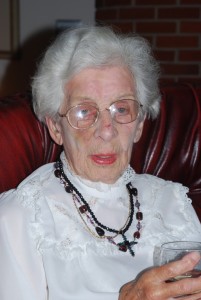
Joyce Palmer at 90yrs.
As you walked into the Stanbridge Church today, you will have seen the sepia print of the wedding of William (Bill) Palmer and Joan Todd, which forms the backdrop to the welcome poster for this Meet. I know both Bill’s children, and their families.
The seated woman in glasses is Bill’s mother, Ruth Palmer, nee Tearle, the sister of my grandfather, Arthur Tearle, of Wing. Their brother was Mahlon Tearle, the grandfather of Rachel Smith nee Tearle, also of Wing. Ruth, Arthur and Mahlon were some of the children known locally as the Tribe of Levi.
To the right and behind Ruth Palmer is Jennie Palmer, whom almost everyone here will have met at the two Meets she attended. You will have known her as Jennie Pugh. If you now look all the way to your right of the photo, you will see standing Joyce Palmer, with the happy smile and the perky hat. She, Jennie and Bill were sisters and brother. When Elaine and I came to England in 1999, there were six people of her generation still alive, including my father. It is most sad that all the accumulated knowledge, wisdom and experience of that generation is now gone. When she died in September 2013, Joyce was the last.
What was she like? She was perfectly straight, honest, kind, forthright to a fault, and she loved her family and was highly knowledgeable in family matters. She was also very deaf, although she could hold a conversation, and could certainly hold her own. She lived in Du Cane Court in Balham, a towering and handsome Art Deco building, said to be the largest brick building in Europe. She was extremely well looked after there, and the porters and maids all knew her by name, and cared for her closely. The photo I have supplied I took of her on her 90th birthday, and she said it was the first time anyone had bought her champagne.
She travelled by train all the way from Balham to Leagrave at least a dozen times to meet me there and to visit Jennie Pugh while she was in the care home. Joyce was determined, city-savvy and courageous. She would walk through four lanes of traffic (she was deaf, remember) to cross the Balham High Street when she wanted to catch a bus, or take the Underground; and she never used the lights.
I admired her. She was stalwart, kind, thoughtful and a singular woman of immense fortitude.
Ray Reece
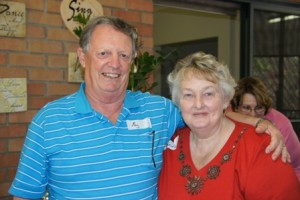
Ray Reece and Denice at the Brisbane Meet.
It is with much sadness that we have to inform the Meet of the death of Ray Reese. Many will remember his huge goodwill and his depth of kindness and humanity. He was always ready with a quiet and considered word, as well as a prayer, full of generosity and gentle supplication.
He was a quintessential Australian, perhaps even the quintessential Australian, who was witty and full of life as well as immensely proud of his Australian origins, and his Australian lifestyle. When Elaine and I went to Queensland to meet many of the Tearles who live there, he showed us his neighbourhood, and the kind of houses they build there, called Queenslanders and designed, he said, more by the environment than by human will; and then he and Denice took us on a memorable tour of the Gold Coast.
He was a member of the Tearle family due to his marriage to Denice nee Tearle, who is the daughter of Harry Leslie Vernon Tearle, a WW2 survivor, who enlisted in Brisbane and served in the Australian Army as number 76049. Her grandparents were James Henry Tearle of Tebworth and Edith Lydia Morgan who were members of a family of straw hat manufacturers in Dunstable. They left for Melbourne in the very early 1900s but James still signed up for the Australian army to fight in WW1 as number 2464. He, too, was a survivor.
Denice was delighted when Elaine and I took her, and Ray, through Tebworth, past the Methodist Chapel, and then to Chalgrave Church. She was so deeply moved to be in the home of her grandfather, she was close to tears. In that beautiful little church, the timbre of Ray’s voice and the humility of his gentle, quiet prayer developed into a moment of deep contemplation. He was a man you couldn’t help but admire.
Denice’s great-grandparents were George 1851 of Hockliffe, and Louisa nee Finch, so you can see, Ray and Denice’s connections to Tearle Valley are strong and their commitment to meeting their family in this valley can be seen by the fact that they have travelled here twice to join us, and each time their warmth and inclusiveness have been a highlight.
I am delighted to say that I have met Ray and Denice in England and in Australia, and on all occasions they have enriched our lives.
We mourn the death of Ray Reese, and we wish only the very best for his dear Denice.
Rachel Smith, nee Tearle
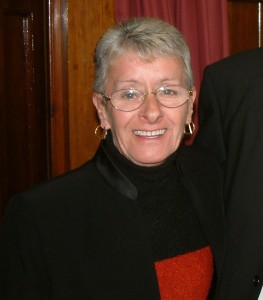
Rachel Smith nee Tearle, who was Thelma’s sister.
We have to record the sad loss of Rachel in March this year after a very long, gallant fight with cancer. I saw her last in 2009 when we took a trip on the Leighton Buzzard light railway, the train being driven by Martin Shepherd, her nephew, on the occasion of his 40th birthday.
Rachel told us of her impending operations, and the entire process was very serious.
She was a sparkling, intelligent lady who once lived in one of the cottages owned by Levi Tearle in Wing, close by the Handpost, which these days is a small roundabout rather than an intersection.
She was the daughter of Harry Mahlon Tearle and Millie nee Green, who was most famous for being a very long-serving AVON lady, and a beauty in her own right. You have already heard of her sister Thelma, but she was also brought up with her brothers Alec and Dennis, in one of the tiny Ebenezer Cottages abutting the Big House (as they called it) which my great-grandfather Levi Tearle built in Wing. Her grandparents were Mahlon Tearle of Wing, the brother of my own grandfather, and Mary nee Paxton. And, of course, as I have hinted, our common great-grandparents were Levi Tearle 1850 of Stanbridge and Sarah nee Blake.
For many years Rachel lived for six months in England and six months in Majorca, where she worked as an estate agent.
We never knew her well, because we met her only seldom; but we know we are fortunate because we knew her at all.
We are very sad to see her go.
Footnote
Since finishing this account, Barbara Tearle has emailed to ask me to add the following:
‘A big vote of thanks are due to Ewart and Elaine. Without their hard work and enthusiasm, these meetings and the coordination of Tearle research would not be so successful. Thank you, both!’
